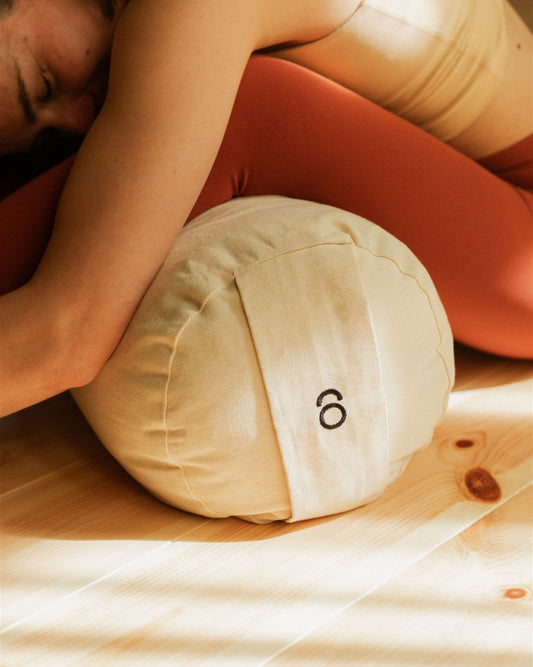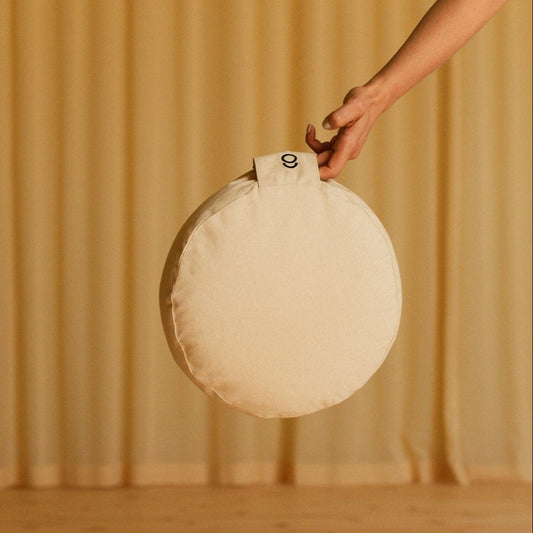Meditation, a timeless practice cherished across cultures, holds a profound place in our fast-paced lives. In this article, we'll embark on a journey to discover different types of meditation, clarify the differences between them, and guide you toward the perfect practice that aligns with your needs. Whether you're a beginner or an experienced meditator, there's a meditation technique that's perfect for you. So, let's explore these practices that lead to inner peace and self-discovery.
Understanding How Meditation Works
Before we delve into the various meditation techniques, it's essential to understand the common principles that underpin meditation's effectiveness. Meditation involves training the mind to achieve a state of focused attention, heightened awareness, and inner tranquility. It encourages the cultivation of mindfulness, which is the non-judgmental awareness of present-moment experiences.
How Meditation Works:
- Focused Attention: During meditation, practitioners focus their attention on specific objects, thoughts, or sensations. This mental concentration helps quiet the mind and reduce distractions.
- Observing without Attachment: Meditation encourages observing thoughts, sensations, and emotions without attachment or judgment. This allows individuals to gain insights into their thought patterns and emotional responses.
- Relaxation: Meditation induces a state of relaxation, both mentally and physically. As stress and tension subside, practitioners experience a deep sense of calmness.
- Mind-Body Connection: Many meditation techniques emphasise the mind-body connection, promoting an awareness of physical sensations and tension within the body.
Now that we've laid the foundation for how meditation works, let's explore different types of meditation practices that harness these principles to varying degrees.

Types of meditation
Discover Your Ideal Meditation Technique: A Quick Test
Embarking on a meditation journey is a personal and profound experience. With various meditation techniques available, finding the one that resonates with you can make your journey even more enriching. To help you determine which meditation style aligns with your preferences and needs, we've prepared a short quiz. Answer the following questions honestly, and let's find your ideal meditation technique together.
Certainly, here's a small test with questions to help individuals determine which meditation technique might be the best fit for them:
-
How do you feel about concentrating on your breath or bodily sensations during meditation?
a) I prefer focusing on my breath or sensations.
b) I'd rather not focus on my breath; it feels distracting
-
Are you interested in a meditation practice with roots in ancient traditions?a) Yes, I appreciate the historical and cultural aspects.
b) No, I prefer a more secular or modern approach.
-
Do you want a meditation practice that emphasises love, compassion, and kindness?
a) Yes, I value developing positive emotions and empathy.
b) No, I'm looking for something more focused on relaxation and stress reduction.
-
Are you open to mantra-based meditation with personal instruction?
a) Yes, I'm willing to learn a specific technique with guidance.
b) No, I'd prefer something I can practice independently.
-
Do you enjoy exploring philosophical or spiritual aspects during meditation
a) Yes, I'm interested in delving into deeper concepts.
b) No, I prefer a practice that's more straightforward and practical.
-
Are you comfortable with the idea of practicing in a group or meditation hall with rituals?
a) Yes, I'm open to communal meditation experiences.
b) No, I prefer a solitary practice without rituals.
-
Are you looking for a meditation technique that helps you release physical tension and relax your body?
a) Yes, I want to reduce physical and emotional tension.
b) No, I'm more interested in mental clarity and focus.
-
How much time are you willing to dedicate to your daily meditation practice?
a) I can commit to 20-30 minutes or more per day.
b) I have limited time and prefer shorter sessions.
After answering these questions, consider the following suggestions:
Mostly (a) answers: You may find practices like Mindfulness Meditation, Transcendental Meditation (TM), or Loving-Kindness Meditation suitable for your preferences.
Mostly (b) answers: Guided visualisation, Body Scan Meditation, or simple breath-focused meditation might align better with your meditation goals.
Remember, the best meditation technique is the one that resonates with you personally and fits seamlessly into your lifestyle and preferences. It's also perfectly acceptable to explore multiple techniques to find what suits you best.
Let's find out more about your preferred meditation type!

Mindfulness Meditation
Mindfulness meditation involves non-judgmental awareness of present-moment experiences, cultivating attention and acceptance. Originating from Zen, Vipassana, and Tibetan meditation techniques, mindfulness encourages observing thoughts, sensations, and emotions without attachment.
How to Practice Mindfulness Meditation:
- Find a comfortable seated position, either on a chair or cross-legged on the floor.
- Close your eyes.
- Direct your attention to the sensations of breathing near the nostrils or the movements of the abdomen while breathing.
- Do not try to control your breath; simply observe it naturally.
- When your mind wanders to other thoughts, acknowledge them without judgment and gently bring your focus back to the breath.
Learn how to start meditation with our guide for beginners on how to meditate properly which explains exactly what you should do in your first few sessions: From breath to posture to time.
Mindfulness meditation has gained popularity for its potential benefits in reducing stress, enhancing well-being, and promoting emotional resilience. It is not to be equated with Mindfulness-Based Stress Reduction (MBSR), which is a course program developed by Jon Kabat-Zinn, aiming to make meditation accessible to a secular audience.
Transcendental Meditation (TM)
Transcendental Meditation, often referred to as TM, is a technique where practitioners silently repeat a mantra to induce deep relaxation and transcend thought. Introduced by Maharishi Mahesh Yogi, TM draws inspiration from Hindu philosophy and seeks to access pure consciousness.
How to Practice Transcendental Meditation:
- Sit comfortably with your eyes closed.
- Effortlessly repeat your mantra.
- Allow your mind to settle into a state of restful alertness.
TM has been associated with reduced stress, improved cognitive performance, and increased self-awareness. It is typically taught by certified instructors and requires personal instruction.
Learn more about TM in my book "Calm Your Mind. The Art & Science of Meditation" which elaborates on the state of the art of scientific research, specifically the proven effects of Transcendental Meditation.

Loving-Kindness Meditation & Compassion Meditation
Both meditation types focus on cultivating positive emotions and empathy but have different emphases. Loving-kindness meditation, also known as Metta meditation, focuses on cultivating love, compassion, and kindness towards oneself and others. It aims to develop empathy and interconnectedness.
Compassion meditation focuses on alleviating the suffering of all sentient beings. Both practices can be done in different postures, such as sitting, lying down, or even while walking.
How to Practice Loving-Kindness and Compassion Meditation:
- Begin by directing loving-kindness or compassion towards yourself.
- Extend these feelings to loved ones, acquaintances, neutral individuals, and even challenging individuals.
- Use repeated phrases like "may you be happy" and "may you be free from suffering."
Research suggests that these practices are linked to positive emotional changes, reduced stress-related distress, improved immune system function, and activation of brain regions associated with emotions and empathy.
Zen Meditation
Zen meditation, or Zazen, is a fundamental practice in the Zen Buddhist tradition. It involves assuming a seated posture and focusing on specific points of meditation, such as the sensations of breathing or movements of the abdomen.
How to Practice Zen Meditation:
- Sit on a cushion or chair.
- Focus on the sensations of breathing or movements of the abdomen.
- Emphasise non-judgmental awareness and acceptance of the present moment.
Zazen cultivates mindfulness, concentration, and insight into the true nature of reality. It is practiced in different Zen schools, each with its unique approach.
Body Scan Meditation
Body scan meditation involves systematically directing attention throughout the body, observing physical sensations, and releasing tension. It promotes heightened awareness of the mind-body connection and is often used for stress reduction and relaxation.
How to Practice Body Scan Meditation:
- Sequentially focus your attention on different parts of the body.
- Notice sensations or areas of tension.
- Cultivate non-judgmental awareness of the body.
The world of meditation offers a rich tapestry of practices, each with its unique benefits and approaches. The key to reaping the rewards lies in exploring different practices to discover what resonates with your needs and preferences. Whether it is mindfulness, loving-kindness, transcendental, Zen, guided visualisation, body scan, or compassion meditation, each offers unique pathways to inner peace and self-discovery. Embrace the journey of self-exploration and allow yourself to be guided by the practice that speaks to your heart and supports your personal growth. Through regular practice and dedication, meditation can become a transformative tool for enhancing well-being, cultivating mindfulness, and nurturing a deeper connection with oneself and the world.
Looking to dive deeper into the world of meditation? Check out our companion article, "Calm Your Mind: The Art and Science of Meditation - A Beginner's Guide." It's a valuable resource for beginners and experienced meditators alike, providing insights and practical techniques to enhance your meditation journey.












